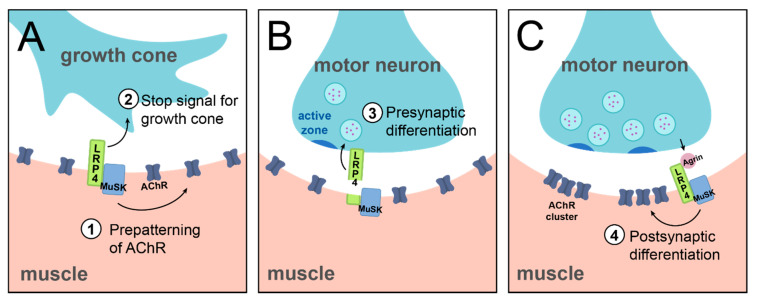Figure 3.
Muscle LRP4 regulates multiple steps in mammalian NMJ development. At the mammalian NMJ, LRP4 instructs multiple steps of development both in cis and in trans to regulate pre- and postsynaptic differentiation. Prior to the arrival of the motor axon (A), LRP4 is required for pre-patterning of acetylcholine receptors in the prospective synaptic region (role 1). Upon arrival of the motor axon, LRP4 is required as a stop signal for the growth cone to arrest further travel along the muscle fiber (role 2). This role is important for the initiation of adhesive contact between the motoneuron and the muscle. Once the growth cone has transitioned to a growing synaptic contact, LRP4 then instructs presynaptic differentiation (B, role 3), likely by the cleaved extracellular domain of LRP4 binding a yet-unknown receptor on motor axons to signal downstream clustering of vesicle and active zone proteins. LRP4 also signals postsynaptic differentiation (C, role 4) by binding Agrin and stimulating MuSK activation (discussed above; see Figure 2). For simplicity, this diagram represents a dimerized LRP4-agrin interaction (as shown in Figure 2) and represented in [44].

